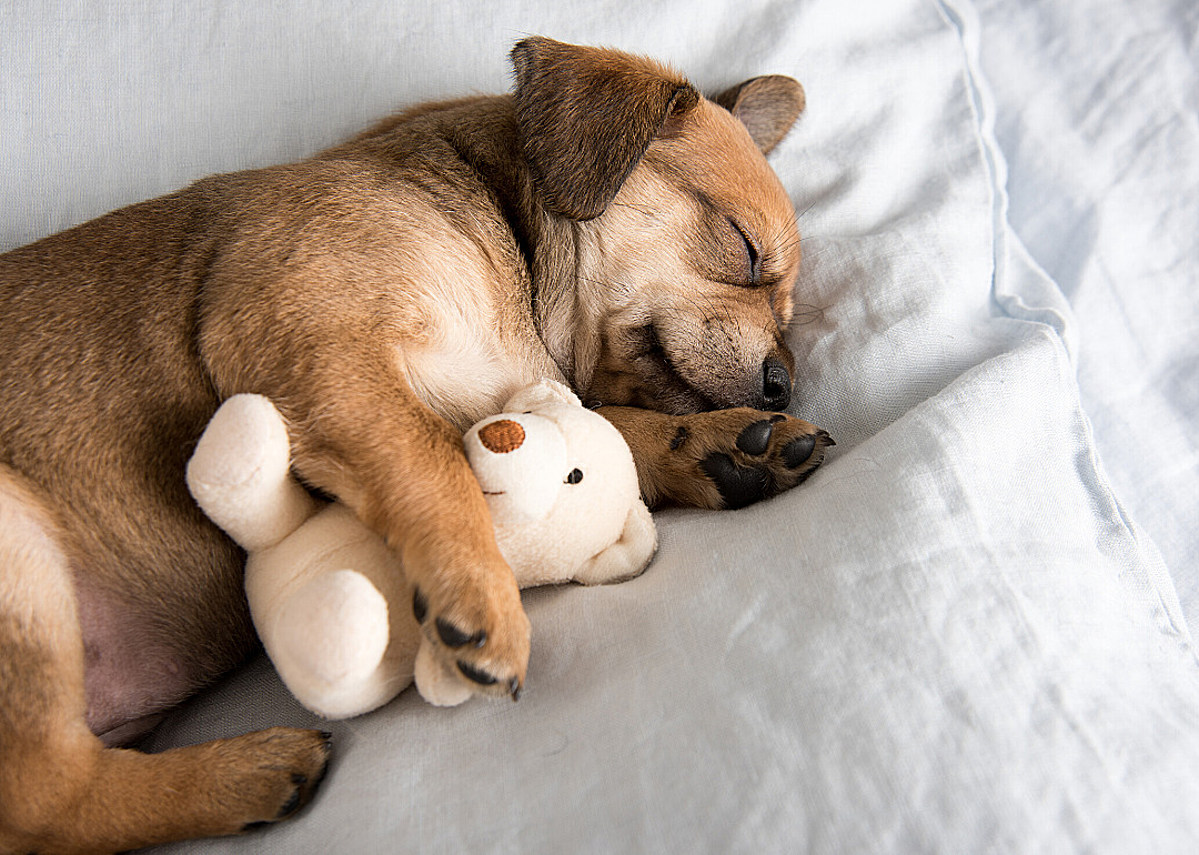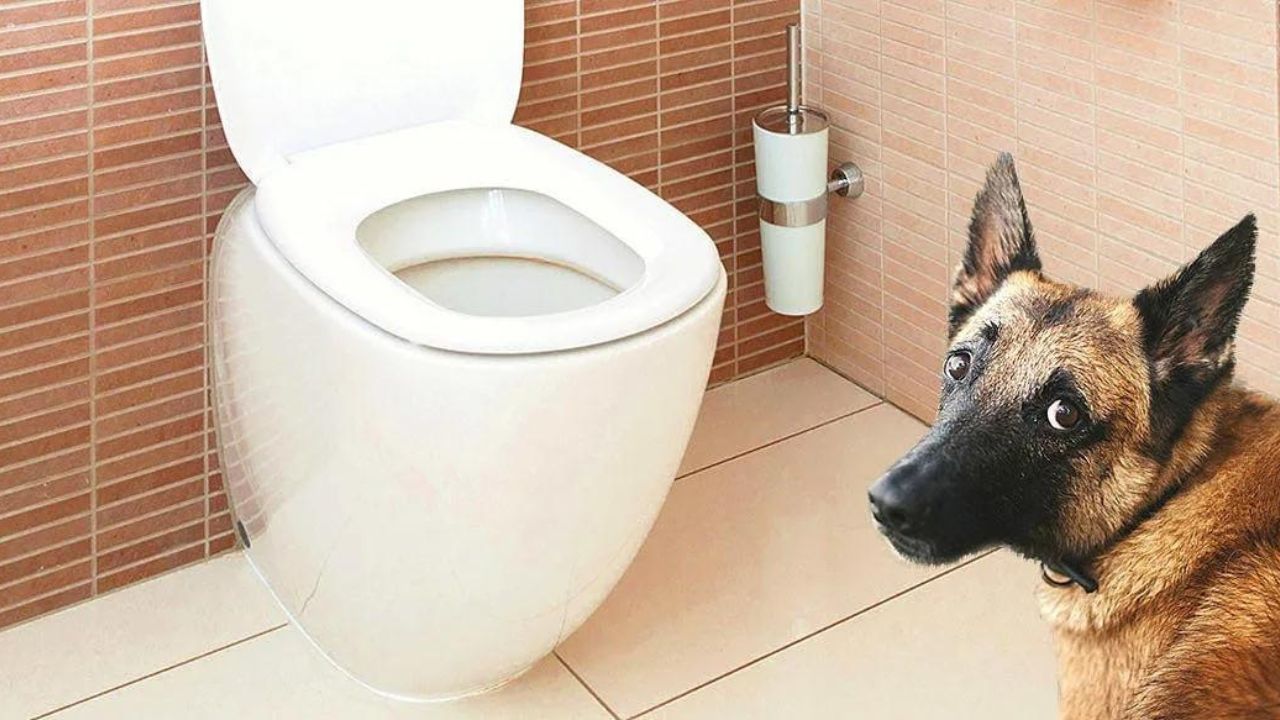
Getting enough sleep is important for all living beings, and puppies are no exception. As a puppy owner, it is important to ensure your furry friend gets the quality sleep they need to grow, learn, and stay healthy.
However, just like human babies, puppies may struggle with falling asleep or staying asleep. This can lead to restless nights for both the puppy and the owner. One effective way to help puppies sleep better is to teach them self-soothing techniques.
This article will discuss self-soothing, its benefits, and how to teach your puppy self-soothe for better sleep. We’ll also provide other tips to help create a comfortable sleep environment for your puppy.
Understanding Puppy Sleep
Before we dive into teaching your puppy to self-soothe for better sleep, it’s important to understand their sleep patterns and needs. These are some key things to keep in mind:
Sleep Patterns:
- Puppies sleep a lot – up to 18 to 20 hours a day!
- They have shorter sleep cycles than adult dogs or humans. Their cycles typically last for 15 to 20 minutes.
How Much Sleep Do Puppies Need?
- A puppy’s sleep depends on its age, size, and breed.
- On average, a 3-month-old puppy needs around 15 hours of sleep daily, while a 6-month-old puppy needs around 14 hours.
What Affects Puppy Sleep?
- Puppies can easily be disturbed by noise, light, or environmental changes.
- Separation anxiety, hunger, and discomfort can also disrupt their sleep.
By understanding your puppy’s sleep patterns and needs, you can create a comfortable sleep environment and develop a routine that helps them get the rest they need.
What is Self-Soothing?
Self-soothing is the ability of a puppy to calm itself down and settle itself to sleep without requiring external assistance or intervention from its owner. It is a way for puppies to develop self-reliance and independence, and it can be an essential skill for them throughout their lives.
There are several benefits of self-soothing for puppies, including:
Better sleep: Puppies who can self-soothe can fall asleep faster and stay asleep longer.
Reduced anxiety: When puppies calm down, they are less likely to experience separation anxiety or stress.
Independence: Self-soothing helps puppies develop self-reliance and independence, which is important for their overall well-being.
Some self-soothing techniques that puppies can use to calm themselves down include:
- Chewing on a toy or bone
- Licking or grooming themselves
- Snuggling with a soft blanket or toy
- Finding a comfortable position to sleep in
- Using white noise or calming music to block out external noises
As a puppy owner, you can help your furry friend learn how to self-soothe by teaching them these techniques and creating a comfortable sleep environment.
Teaching Your Puppy to Self-Soothe

Teaching your puppy to self-soothe can take time and patience, but it’s worth the effort. These are some steps you can follow to help your puppy learn how to calm themselves down and settle to sleep:
Start with a comfortable sleep environment: Make sure your puppy has a comfortable and quiet place to sleep. A crate or bed in a silent room corner can provide them with a safe and secure space.
Use a bedtime routine: Develop a bedtime routine that signals your puppy that it’s time to settle down for the night. This could include dimming the lights, playing calming music, or giving your puppy a special toy or blanket.
Teach your puppy to self-soothe: Encourage your puppy to self-soothe by providing toys or chew treats that they can use to calm themselves down. You can also praise and reward them when they settle down independently.
Practice separation: Gradually increase the amount of time your puppy spends alone, starting with just a few minutes and gradually increasing the duration. This will help your puppy learn that it’s okay to be alone and that they can calm themselves down.
Be patient: Teaching your puppy to self-soothe takes time and patience. Some puppies may take longer to learn than others, so be consistent in your training and give your puppy plenty of positive reinforcement.
It’s important to note that some puppies may still need assistance settling to sleep, especially if they are experiencing separation anxiety or other issues. In such cases, you may need to consult a veterinarian or a professional dog trainer for additional help.
Other Tips for Better Puppy Sleep

In addition to teaching your puppy to self-soothe, here are some other tips that can help improve their sleep:
Stick to a routine: Establish a regular schedule for your puppy’s meals, exercise, and sleep. This can help regulate their internal clock and make it easier for them to settle down at night.
Exercise: Make sure your puppy gets plenty of exercise during the day, as this can help tire them out and make them more likely to sleep through the night.
Avoid overstimulation: Avoid activities or toys that can overstimulate your puppy before bedtime. This includes playing rough, loud music or giving them treats high in sugar or caffeine.
Limit water before bedtime: To prevent accidents during the night, limit your puppy’s water intake a few hours before bedtime.
Provide comfort: Puppies may feel more secure and comfortable with a familiar object, like a soft blanket or a toy.
By following these tips and teaching your puppy to self-soothe, you can help your furry friend get the quality sleep they need to stay healthy and happy.
Conclusion
Teaching your puppy to self-soothe can have numerous benefits, including better sleep, reduced anxiety, and increased independence. By creating a comfortable sleep environment, establishing a bedtime routine, and practising separation training, you can help your puppy develop the skills they need to calm down and sleep.
In addition, sticking to a routine, providing regular exercise, and avoiding overstimulation can further improve your puppy’s sleep quality. Remember, teaching your puppy to self-soothe takes time and patience, but the effort is well worth it for a happier and healthier furry friend.








